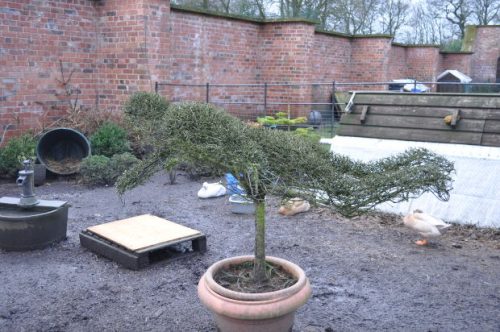A hedge is often a focal point in a garden, a source of pride, and the first thing visitors notice. Depending on the species and how handy you are with a hedge trimmer or set of shears, you can achieve a hedge of any shape or size. An alternative to growing a traditional hedge is to grow the same species in large containers. This gives you the freedom to reposition them in the garden whilst still enjoying all the same visual benefits of a fixed hedge.
How to Get The Best Out of Containerized Topiary
When growing topiary in containers, the first thing to know is that the roots are very limited. Therefore, you must ensure the topiary is carefully and regularly watered. Besides this, the following are top tips on how to grow topiary in large containers:
- If you intend to establish topiary shapes for the first time, evergreens species like box, holly, yew, and privet are most suitable because they are condensed and respond well to clipping.
- If you’re interested in simpler shapes like pyramids and cones, consider making use of canes to make primary frames to support the fledgling plant which you can then trim consistently over time.
- Early fundamental pruning requires a lot of care and is best done using clippers or secateurs so that you don’t inadvertently trim branches by accident. This also helps to promote flush growth that will take the shape you want later on. Note that when it comes to creating shape, even older branches should not be spared.

- If you’re aiming to achieve more intricate shapes such as animal designs, consider utilizing chicken wire shapes/armatures and place them on top of the plant, and subsequently trim the outside consistently.
- To stop the spread of dangerous diseases like ‘box blight’, the blades of your shears, secateurs, and hedge cutters should be cleaned and treated with the anti-bacterial spray (Yes I know this sounds like over kill, but if you’re aiming for the best results you need to make the best preparations!)
- To feed the topiary in the Spring it’s important to add slow release fertilizers such as ‘Growmore’ to the container soil
- To get perfect globular topiary shapes, prepare a wire circle with the diameter of the same size as the globe and guide the plant shape every step of the way.
- The best time to trim the topiary for the first time is June and a subsequent one in September before winter (so this is the one to prepare for currently). Avoid trimming in April or May because this can harm the foliage.
- For very large topiary shapes and hedges, it’s advisable to use a cordless hedge trimmer to reach even the highest points without being restricted by a cord. This will enable you to achieve a smooth cut without irritation.


